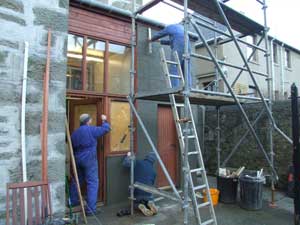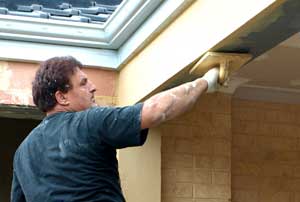Plasterer (Exterior)
Tasks & duties

Exterior plasterers may do some or all of the following:
-
look at the plans and specifications made by the architects and draftspeople
-
advise clients on suitable products to use
-
attach flashing around windows (reinforcing and weatherproofing joints)
-
decide whether the surface will be covered using cement-based, sand-based or modified plaster
-
erect mobile scaffolding if it is under five metres high
-
prepare the surface for plastering
-
mix the plaster
-
apply plaster according to manufacturer's specifications
-
ensure the surface they cover is watertight
-
create decorative textures in the finishing coats
-
clean up after the job
-
run their own business
Specialisations
Increasingly there are new types of materials and application techniques, which allows exterior plasterers to specialise in a certain material or system.
Skills & knowledge

Exterior plasterers need to have:
-
knowledge of different flashing and cladding systems
-
knowledge of plastering materials and methods
-
knowledge of building rules and regulations related to plastering
-
organisational ability
-
practical skills
-
skill in interpreting plans and ability to follow instructions
-
problem solving skills
-
good communication skills
-
basic maths
Entry requirements
There are no specific entry requirements to become an exterior plasterer. However, most employers prefer you to do an apprenticeship and gain a National Certificate in Solid Plastering and/or a National Certificate in Proprietary Plaster Cladding Systems. For further information contact the Building and Construction Industry Training Organisation.
Secondary education
At least three years of secondary education is recommended. Useful subjects include maths and design.
Training on the job
Skills are gained on the job and exterior plasterers can attend seminars and training sessions about new products coming onto the market. They also keep up to date by reading trade publications.
Registration
The Licensed Building Practitioners scheme is being phased in between 2007 and 2011. This will require some exterior plasterers to become registered.
Useful experience
Experience in the building construction industry as a plasterer's labourer or a carpenter, or work using hand tools may be useful.
Related courses
Ceiling, Wall and Floor Fixing
Plastering
For more information, please refer to Career Services.
Document Actions
